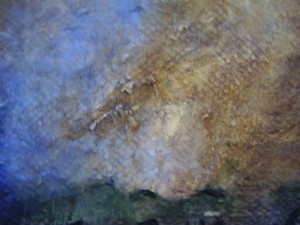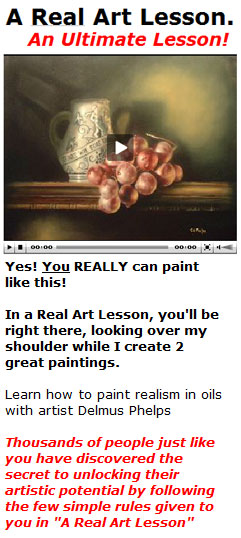Oil Painting Lesson Step 4
Posted by admin | Under Oil Painting Saturday Apr 24, 2010 To start the lesson follow the steps below:
To start the lesson follow the steps below:
Read Introduction on Landscape Oil Paintings
Follow Oil Painting Lesson Step 1
Follow Oil Painting Lesson Step 2
Follow Oil Painting Lesson Step 3
Follow Oil Painting Lesson Step 4
Follow Oil Painting Lesson Step 5
Follow Oil Painting Lesson Step 6
Step 4
If you look at what we have done so far, you’ll notice that the first three that an extremely talented child of about eleven might do while waiting for recess. You have the trees, the water, the sky, the reflections, the shadows. You can see where the land ends and the water begins. But you don’t have a painting yet. It’s just a picture.
The next step-using toilet paper-will make it a real painting. It’s my piece de resistance, the real trademark of my method of Instant Art. Just as Marconi had his wireless and John Wayne had his horse, I have toilet paper dipped in paint. Here’s how it works.
In the first step, we used toilet paper to add to an abstract schemer of paint. As I have said, toilet paper is not just a joke. Among other advantages it makes it a bit easier to keep a light touch, and that is very important for composing those subtle contrasts and vibrations that make a painting seem truly alive. Even some experienced artists using brushes have a tendency to belabor their canvases with too much paint. That’s less likely with something as thin and wispy as toilet paper, even if it’s folded over a few times.
At this point when we need to make the water sparkle, we must be able to drag a wad of toilet paper dipped in paint across the water to create the illusion of sprightly dancing ripples. The light that plays on water is an exquisite convolution of colors. It is very difficult to capture it with a brush or a palette knife. The tendency is to paint too thickly.
You can coat the thin edge of a palette knife with light blue or even white and crease the surface of the water for a ripply effect. Thin lines of creamy blue will serve to represent the ripples reflecting the sun.
But the far better way is with toilet paper. It will more easily capture the buoyancy of light playing upon water. Dip the edges of your toilet paper wad lightly in white paint and, with a loose wrist movement, swish the paper across the surface of the water just once and then step back and observe what you have done. If you’ve achieved what you ant, make another swipe below the first one. That’s about all you need to give the effect. Practice the wrist movement for it’s the secret to creating a light touch.
